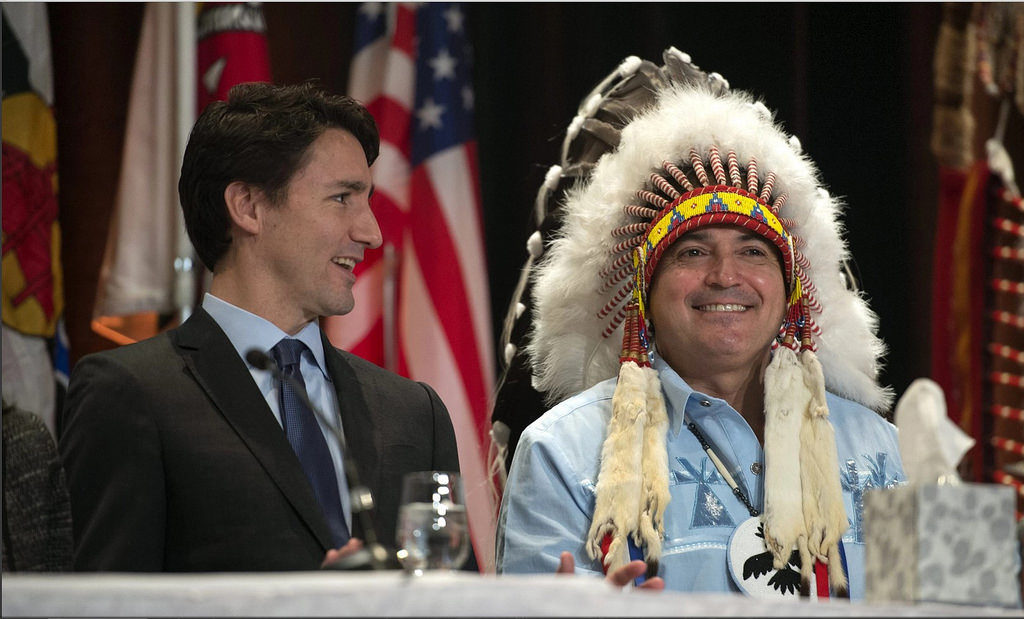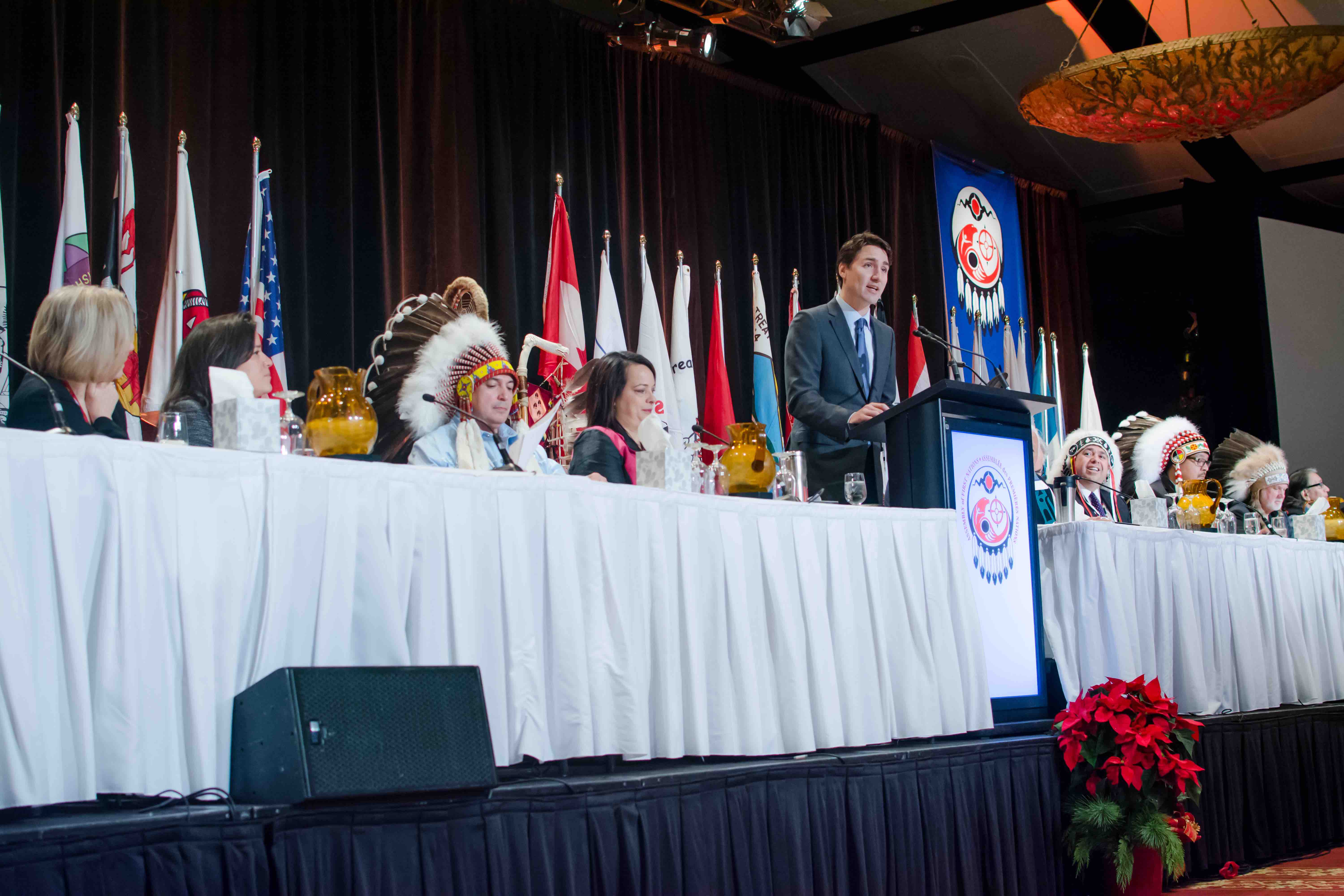Reconciliation means “…that if you are a child living on reserve, you should be able to turn on the tap and have clean water come out. Water that you can drink, and bathe in, without fear.” — Right Honourable Justin Trudeau, Prime Minister of Canada in a speech to the AFN on December 6th, 2016
These words of the Prime Minister reflect a dark truth: the mismanagement of water infrastructure for First Nations is a shameful part of Canada’s past. Yet, they also hold lessons for the future. Currently, there are long-term drinking water advisories in dozens of First Nations communities affecting approximately 45,000 First Nations citizens who do not have access to safe drinking water or adequate sanitation.
This, despite the United Nations General Assembly reaffirmation of the human rights to water and sanitation in 2015 by saying that they “…entitle everyone, without discrimination, to have access to sufficient, safe, acceptable, physically accessible, and affordable water for personal and domestic use and to have physical and affordable access to sanitation, in all spheres of life, that is safe, hygienic, secure, and socially and culturally acceptable and that provides privacy and ensures dignity.” First Nations know all too well why these rights are critical.

The Assembly of First Nations (AFN), instructed by Chiefs who are informed on the state of First Nations water and wastewater infrastructures, operates with the view that water is more than a commodity or a “resource to be managed.” Rather, water is a sacred relation and a transcendent gift. Traditional ceremonies, spiritual teachings, First Nations laws, and the most up-do-date scientific inquiry all converge on this truth: water is life.
The question that confronts the AFN is how to chart its course to advocate for safe and secure water sources for the future.
While, there are human rights to water and sanitation from a First Nations perspective, “rights” and “responsibility” are innately connected. It is not just the violation of rights that is the problem, it is also the removal of the ability to fulfill First Nations responsibilities as stewards of the land and water that are at issue. The era of “reconciliation” involves creating significant improvements throughout society as governments and institutions step forward and step up to implement reconciliatory calls to action and ensure that policies and laws are aligned with the United Nations Declaration on the Rights of Indigenous Peoples.
What does reconciliation mean for water governance and water law?
Thirsty for regulation reform
National Chief Perry Bellegarde has defined his time as National Chief with three simple words: “closing the gap”. The questions often given in response by government have been how, when, and for how much?
On World Water Day 2018, Chief Bellegarde emphasized this view: “Water is sacred for First Nations and key to a healthy environment and the health and well-being of all living things. Yet, too many First Nations are living at risk with no access to clean water. It affects our health, education, and livelihood. This is unacceptable in a developed country like Canada. The federal government’s goal of ending all drinking water advisories in First Nations by 2021 is clearly a challenge, but we can achieve it by working together in a spirit of partnership and reconciliation.”

The gap in understanding and the gap in resources has contributed to the First Nations drinking water situation in Canada. But as problems arise, so do the opportunities for progress.
Many remember the Walkerton drinking water contamination tragedy of 2000 and what followed. Some will also remember the Expert Panel on Safe Drinking Water for First Nations and the recommendations to government that resulted from the process. Summarized simply, they were: Address the critical issues first, fund it properly, and work with First Nations to develop the answers. None of this occurred.
Instead what was introduced to First Nations in 2013 was unhelpful, in spite of the name: the Safe Drinking Water for First Nations Act (SDWFNA).
The SDWFNA came into effect November 1st, 2013. The Act was designed to enable the government to develop enforceable federal regulations to ensure access to safe, clean, and reliable drinking water; to better manage the effective treatment of wastewater; and to protect sources of drinking water on First Nations lands.
As it stands now, the Act allows the Government of Canada, in collaboration with First Nations, to develop federal regulations to ensure:
- Access to safe, clean and reliable drinking water;
- Effective treatment of wastewater; and
- Protection of sources of drinking water on First Nations lands.
The SDWFNA, in its current form, focuses on 11 essential regulatory components. However, those with legal backgrounds or Indigenous knowledge are especially offended by a clause that illustrates the paternalistic and colonial mentality that pervades the legislation:
7 – Regulations made under this Act prevail over any laws or by-laws made by a First Nation to the extent of any conflict or inconsistency between them, unless those regulations provide otherwise.
This clause does not reflect reconciliation. And the intentional evisceration of First Nations water laws and legal orders does not reflect the Prime Minister’s words that ‘[N]o relationship is more important to me and to Canada than the one with Indigenous Peoples.”
Since its proposal and adoption, there has been consistent and widespread opposition to the SDWFNA, due to a lack of consultation, a lack of funding for its implementation, and a lack of consideration for the needs of First Nations. In 2017, the Crown thought that it could amend this law into compliance with the Constitution and with the needs of First Nations. Again, there was widespread opposition.
Through the SDWFNA, regulations can be unilaterally developed and passed by the government at any time and represent an active threat to First Nations rights, title, and governance. The SDWFNA was widely resisted and calls for its repeal have been put forward by the AFN, the Chiefs of Ontario, the Union of BC Indian Chiefs, and the Federation of Saskatchewan Indian Nations (now the Federation of Sovereign Indigenous Nations) amongst others.
Looking forward, Canada’s water community must be mindful that reconciliation is about more than human-to-human interactions. Reconciliation can be a way for us to transcend the anthropocentric lens, particularly embedded in our legal system, and reconcile our contemporary circumstances with natural law, Indigenous laws, and legal orders.
This article has been abridged for digital publication. Read Caleb’s full article in the Jan/Feb. 2019 edition of Water Canada.









